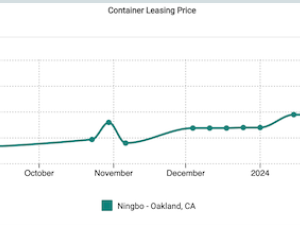Alliance of top three shipping lines could start mid-2014
By: Reuters | Mar 21 2014 at 06:45 AM | Liner Shipping
Maersk Line said it expects an alliance with its two closest rivals to start operating from the middle of the year after the tie-up was approved by U.S. regulators.
The industry has been battling overcapacity since the financial crisis because new vessels ordered before the downturn have flooded the market. This has driven rates on the main routes between Asia and Northern Europe to loss-making levels.
The so-called P3 alliance is between the world’s three biggest container shipping lines - Maersk Line, a unit of A.P. Moller-Maersk, Switzerland-based MSC Mediterranean Shipping Company and France’s CMA CGM.
To cut costs, they have agreed to pool about 250 ships which will operate on three trade routes: Asia-Europe, trans-Pacific and trans-Atlantic.
The approval from the U.S. Federal Maritime Commission (FMC) takes effect from Monday but will apply only to routes to and from U.S. ports. The alliance still needs approval from Chinese and European regulators before it can become fully effective.
Maersk said it expected to receive Chinese and EU approval before the middle of this year. “We expect that the P3 can be started mid-2014,” it said.
The grouping has been criticised by cargo owners because of fears it could dominate key shipping routes on the trans Pacific and Asia-Europe trades.
The Asia Shippers Council, which represents cargo owners in Asia, estimates the alliance will have 42 percent of the Asia-Europe trade and 24 percent of the trans-Pacific trade.
Shares in A.P. Moller-Maersk opened up 2.5 percent after news of the U.S. approval, and were up 1.7 percent at 1011 GMT, outperforming the main Copenhagen index which was down 1.2 percent.
“North America and the U.S. in particular is a key shipping market. Therefore, the decision by the FMC is a very important step towards overall approval of P3,” a Maersk Line spokesman told Reuters.
With a global market share of around 15 percent, Maersk Line is the world’s biggest container shipping company, while MSC and CMA CGM are number two and three respectively.
Maersk says the alliance will allow partners to operate with larger vessels and maximise utilisation.
“This means that they can get significant improvements in their unit costs relative to their competitors,” said Lars Jensen from maritime analysis company SeaIntel.
He estimates the alliance will operate with vessels that on average are 2.000-3.000 TEU (twenty-foot equivalent unit containers) bigger than competitors.
Analysts from investment bank Alm. Brand Markets forecast the tie-up could lower Maersk Line’s costs by up to 6 percent.





